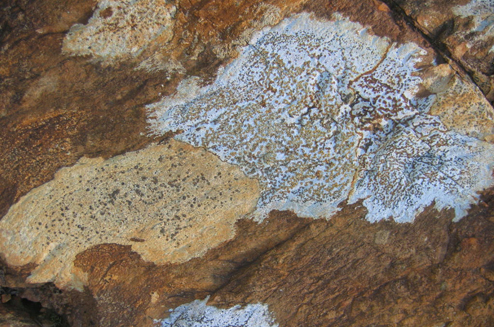
The Introduction
Heritage in buildings has traditionally been considered to deal with human history as expressed and recorded in the buildings constructed by past generations. This has put it firmly in the humanities camp, and often at odds with those who pursue an architecture that reflects contemporary consciousness, including a blossoming ecological awareness.
Sustainability has, until now, been considered to deal with issues of energy and resource consumption, and minimisation of human impacts on and off site. This is often seen to have little or nothing to do with a sympathetic understanding of the heritage issues affecting a particular site or locality.

The elements in heritage
A true understanding of heritage enables the designer to make a journey through time well beyond human history, tracing different pathways back through the layers of influence, through deep time into a site’s natural history.
He will make the distinction between natural heritage and cultural heritage, and find information in the rocks and soil that determined the geographical character of the site. The climate that affects each site individually combines with these deeper layers, and determines what floral communities are found there. This is the living layer of natural history which still sits across all previous layers, and has a profound effect on the subsequent, and relatively brief, human history. In the Australian context, this localness has a particular poignancy, often ignored.
The sum of all these histories is its true heritage. The natural layers had no choice about what happened – it was a combination of chance (geological formation) and natural selection (which plants could survive in what climatic conditions), whereas the human history had some opportunity and ability to respond, or to over-ride the natural conditions. The cultural heritage records the responses made by earlier occupiers of a site or its surroundings, and these can be considered as either appropriate or inappropriate. But in a world where sustainability is no longer an optional extra, inappropriate responses can no longer be rewarded at the hands of humans, any more than they would have been at the hands of nature.

The elements in sustainability
Sustainability in the built environment is most often considered to be the condition where a building – or a collection of buildings, such as a city – have no net lifecycle emissions to, or depletions from, the supporting ecology. This view presupposes a hierarchical view of sustainability, where a complex economy is supported by an equally complex social order, which in turn is supported by the ecology of the surrounding environment.
This is a simplistic view of sustainability, in which it is seen as an end point, maintained within a stable or self-balancing system. In fact, the natural world is no such thing; rather it is a constant tussle for dominance at one level (as in competition between individuals and species), and at particulate level, a constant tendency to break down (as in Newton’s 2nd Law of Thermodynamics). When we talk of ‘the balance of nature’ we are really referring to the relatively temporary state of the game that enables life on Earth to continue much as we know it. Here we can see the first common view of things between the two disciplines – the role of apparent chance and competition in producing the circumstances that surround us.
In practical terms, sustainability should be seen more as a journey, although this journey often seems to have an asymptotic destination – it may never be literally reached. At the material level, for a building to have no net impacts it must regenerate the energy used to construct it, maintain all materials within the construction stream such that nothing is wasted during its construction or at the end of its working life, and provide all resources (water, energy, and consumables) to the occupants. This is a tall order, and rarely if ever achieved – yet, but some fundamental and critical things must be recognised if it is even to begin.
Most fundamentally, the building must respond to the climate and the site that it sits in. Climate responsive design (or passive design, to use its more common label) enables the building to eliminate the biggest energy demand: space heating and cooling (in virtually all climate zones). Secondly, climate responsive design enables the building to respond properly to the need for water, lighting energy, and the treatment and re-use of wastewater. Thirdly, site-specific design will use materials that respond to the site’s passive design needs in a localised way. All of these technical aspects of sustainability draw on the information contained in the heritage story, if it is told accurately and completely, as described above.

The confluence of two streams of thought
Truly sustainable design is that which delves deeply into the complete heritage of a site, providing features that respond to the basic elements of earth wind fire and water: the geography and topography, the natural raw materials (whether used in construction or not), the original floral communities, as well as its human history.
These will, if considered well, work in harmony with the more mundane – but increasingly critical – technical aspects of material sustainability, such as passive design for zero energy heating and cooling, and water harvesting and waste water treatment integrated into (predominantly) indigenous landscaping.
This paper now sets out the beginnings of a detailed discussion of the above, in its two broad sections. It follows the conventional division between the two disciplines only to the extent necessary to introduce the reader to the concepts through familiar portals. In this way, the reader is also able to trace the still-unfolding journey of the authors, who recently found themselves peeking at each other as their tunnels connected, although dug from opposite sides of the mountain.
Words and ideas: produced as a collaborative between Trevor King and Dick Clarke.




















